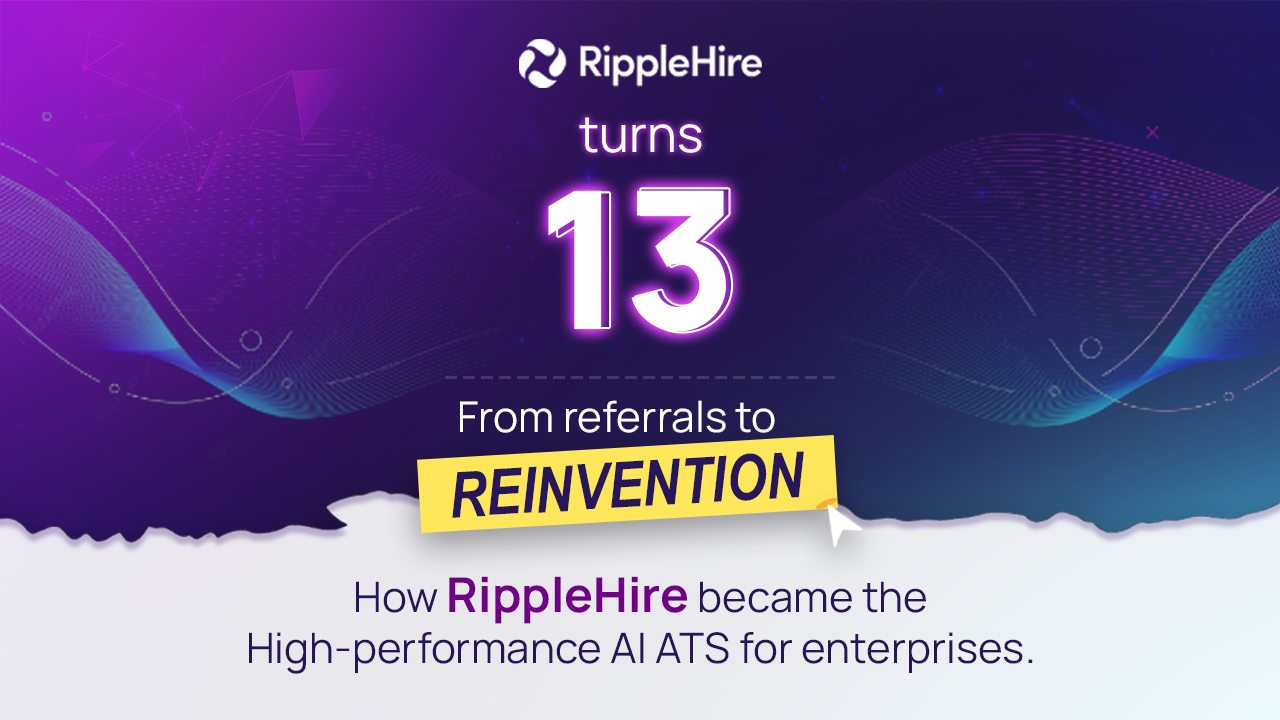5 Common Pitfalls in Drive-Based Hiring and How to Avoid Them
Hiring drives are meant to create momentum—close roles fast, hit volume targets, and keep business leaders happy. But in practice, they often expose the cracks in recruitment. Panels run late, criteria shift mid-day, candidates vanish without explanation, and the team is left exhausted with results that don’t match the effort.
Enterprises repeatedly conduct these hiring drives because they’re essential for scale, yet the same mistakes recur each time. But most of these pitfalls are easy to spot and avoid if tackled head-on.
In this blog, we’ll unpack the common traps that derail drive-based hiring and share practical fixes you can apply before your next big event.
Pitfall 1: Walking into a hiring drive without clear shortlisting rules
One of the fastest ways to lose control in a hiring drive is not knowing exactly what you’re looking for.
When shortlisting criteria aren’t defined in advance, every recruiter and interviewer uses their own judgment of what “qualified” means. Some lean heavily on education, others on communication, others on work experience.
The impact is:
- Long queues at entry.
- Panels evaluating completely mismatched profiles.
- Candidates waiting for hours with no clarity.
In a high-volume event where speed is everything, unclear criteria turn a sharp funnel into chaos. Instead of fast, consistent decisions, you leave with a stack of resumes and very little clarity.
Lock criteria, and use tools to pre-filter
The easiest way to avoid chaos is to decide your rules before the first candidate walks in. Sit with the hiring team and make a simple list: what’s non-negotiable and what’s just nice to have. For example, things like work eligibility, basic language skills, or willingness to travel should be treated as must-haves. Prior experience or how long someone stayed in their last job can be extras you look at later.
Once that’s clear, put it down in a short checklist or scorecard. This way, every recruiter and interviewer is looking for the same things instead of making it up on the spot. If you have a tool or ATS, you can even let it filter obvious mismatches before people reach the panel.
Start with clarity, keep it consistent, and you’ll save hours of confusion during the drive.
Pitfall 2: No proper flow on the day of the drive
A “flow” just means how people move through the drive from start to finish. If you don’t plan it, everyone ends up in one big queue and the whole day goes off track.
You see it all the time with long lines at the entry desk, forms getting lost, candidates sitting for hours with no updates, and panels either overloaded or sitting idle. When this happens, frustration builds on both sides.
Recruiters feel the pressure, interviewers lose patience, and candidates start walking out. The whole drive slows down, and by the end of the day you’ve wasted time without moving enough good profiles forward.
Create a clear flow for the day
Here’s how to keep it simple:
- Entry check: Have one desk just to check documents and mark attendance. Don’t mix this with screening
- Triage quickly: Split candidates into three lanes —
- High-fit → straight to interview panels.
- Borderline → a short screening round (5–10 minutes) to decide if they move ahead.
- Issues → help desk for missing documents or queries.
- Help desk: Anyone with missing papers, incomplete forms, or basic queries should be sent here, not clogging up the main line.
- Feedback on the spot: Don’t let interviewers pile up forms. Have them enter quick ratings digitally or hand them in immediately after each round.
When you design the flow like this, the drive feels smooth. Candidates aren’t left waiting in limbo, panels keep moving, and by the end of the day you have clear results instead of chaos.
Pitfall 3: Keeping candidates waiting without updates
One of the fastest ways to lose good candidates during a drive is by leaving them in silence. They wait in crowded halls, not sure when their turn will come, or they go home after the interview and don’t hear back for days. In volume hiring, this silence hurts even more because these candidates often have multiple options. A drive that feels unstructured or unresponsive pushes them straight to competitors.
Close the loop quickly and often
Don’t let candidates sit in the dark. Even simple updates make a big difference.
- Send SMS or WhatsApp alerts to tell people their time slot or next step.
- Share short “you’re shortlisted” or “thank you, not moving ahead” messages on the same day.
- If final results take time, tell them the exact date they’ll hear back.
Quick updates show respect for their time, reduce anxiety, and keep your brand strong even with those who don’t get selected.
Pitfall 4: Ignoring data during the drive
Many companies run hiring drives based on gut feel. The hall is full, panels are busy, offers are rolled out — so the event must have been a success, right? Not always. Without tracking what actually happened, you’re just guessing.
Here’s what often gets missed:
- How many candidates dropped out between stages
- Which interviewers gave feedback late or not at all
- How long did it take to move someone from the entry desk to the offer
- Which sources (referrals, job boards, agencies) sent candidates who actually got selected
- Cost of hidden effort — recruiter overtime, manager hours, travel, and logistics
When these numbers are not captured, the same mistakes repeat. You may keep investing in channels that look busy but don’t deliver. You may miss early signs of delays that cost you top candidates. And you end up spending more than you realize because hidden costs never make it into reports.
Track simple numbers, not complex dashboards
You don’t need 20 fancy metrics. Just measure what matters, such as conversions at each stage, time taken, and cost buckets. Use a tool or ATS that captures this automatically so recruiters aren’t buried in spreadsheets. With this, you’ll know what’s working, what’s wasting time, and how to run the next drive better.
Pitfall 5: Losing candidates after rolling out offers
Even if the drive goes smoothly, many companies hit a wall after offers are given. Candidates say yes on the spot, but weeks later, they back out or simply stop responding. This is more common in campus or entry-level drives where people often hold multiple offers at the same time.
The main reasons this happens:
- No regular follow-up after the drive, so your offer slips from their mind
- Joining dates that clash with exams, notice periods, or personal schedules
- Confusion about salary structure, benefits, or role expectations that wasn’t cleared earlier
- Delayed paperwork and poor communication from your side, which creates doubt
When these issues go unchecked, you lose not just the candidate but also the time, money, and effort spent on running the drive.
Keep candidates warm and clear
The mistake most companies make is thinking the job is done once the offer letter is in hand. In reality, that’s when the real work begins. Candidates who leave the drive excited can cool off quickly if they don’t hear from you again.
The best way to prevent this is to stay present in small but consistent ways. A simple WhatsApp message or call every week goes a long way: “Hi, just checking in — excited to have you join us next month.” This tells the candidate you haven’t forgotten them.
It also helps to give them a glimpse of life after joining. Share a short video of the team, invite them to a webinar with their future manager, or send a note about a project they might work on. These little touches turn an abstract offer into something real.
Clarity matters too. Don’t keep salary details, joining dates, or role expectations vague. If anything changes, tell them right away instead of waiting.
Making Your Next Hiring Drive Work With RippleHire
Most pitfalls in drive-based hiring come down to two things: lack of structure and lack of visibility. Interviewers miss cues, candidates slip away, and recruiters drown in manual updates. RippleHire was built to fix exactly that.
Our AI-powered ATS helps enterprises run hiring drives that are fast, consistent, and scalable. From pre-screening candidates and auto-assigning interviewers to capturing instant feedback and sending timely updates, the system takes care of the heavy lifting. Recruiters focus on decisions, not spreadsheets. Leaders get real-time dashboards instead of post-mortem reports. And candidates walk away with a professional, transparent experience.
If your team is gearing up for volume hiring, book a demo with RippleHire and see how you can turn your next drive into a success story.
FAQs
Why do hiring drives fail without clear shortlisting rules?
When you don’t define criteria before the drive, every recruiter or interviewer uses their own judgment of “qualified.” This leads to mismatched profiles, long queues, and wasted panel time. Clear shortlisting rules keep everyone aligned, save hours at the gate, and make sure only the right candidates move forward. A simple checklist or scorecard is often enough to bring that consistency.
How can a hiring drive flow be designed better?
A drive works best when there’s a clear entry-to-exit flow. Start with document checks, then quickly triage candidates into different lanes: high-fit straight to panels, borderline to short screenings, and incomplete cases to a help desk. This prevents queues from piling up and keeps panels balanced. When candidates know exactly where to go, the day feels smoother and recruiters avoid unnecessary pressure.
What’s the impact of leaving candidates waiting without updates?
Silence is one of the fastest ways to lose good candidates. They may leave during the drive or accept another offer soon after. Even short updates—like an SMS about their time slot or a same-day “shortlisted” message—make candidates feel respected. This simple habit reduces anxiety, keeps them engaged, and ensures they leave with a positive impression of your company.
Why is it risky to ignore data during drives?
Without tracking, you only guess whether a drive was successful. You miss patterns like high dropouts at certain stages, panels delaying feedback, or channels sending mismatched candidates. Capturing basic numbers—conversion rates, time taken at each stage, and costs—shows what’s really working. This prevents you from repeating mistakes and helps you run smarter, more efficient drives in the future.
Why do candidates back out after accepting offers in drives?
Candidates often juggle multiple offers. If they don’t hear from you after the drive, your offer slips from their mind. Delays in paperwork, unclear salary details, or joining dates that clash with exams also push them away. Regular check-ins, clarity on expectations, and small engagement efforts—like a video from their future team—help keep your offer top of mind and reduce reneges.
How can technology reduce pitfalls in drive-based hiring?
Recruiters often get stuck chasing feedback, managing queues, and sending updates manually. Technology can handle these repetitive tasks—auto-assigning interviewers, capturing instant feedback, and sending consistent communication to candidates. This frees up recruiters to focus on decision-making and engagement. With real-time dashboards, leaders also see progress instantly, rather than relying on post-event reports. Drives become more structured, efficient, and scalable.















